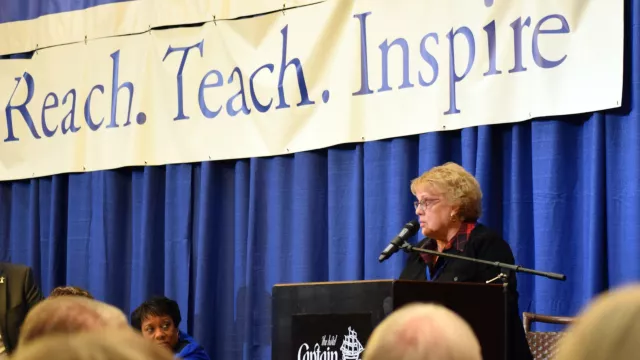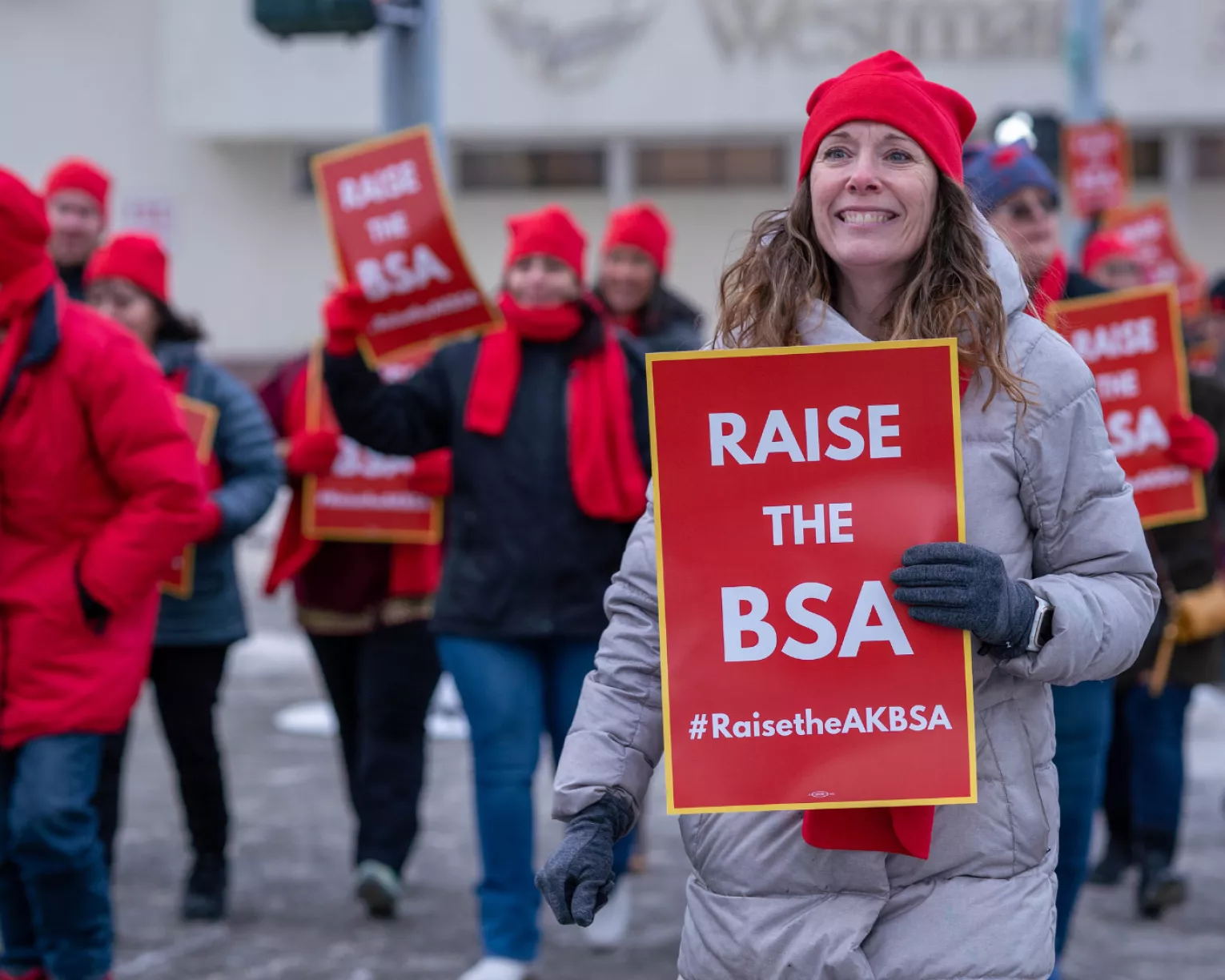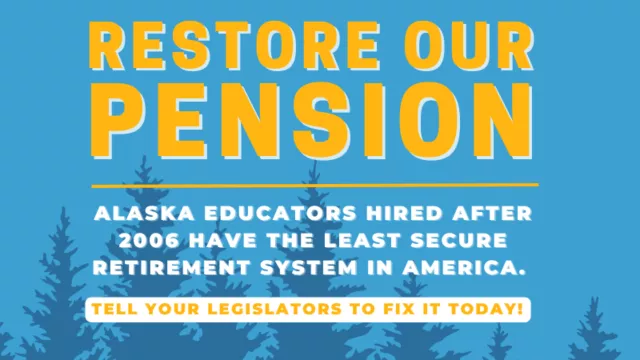In recent years, Alaska educators have taken to calling Alaska’s worst in the nation retirement system “the death tier”—a grim acknowledgement that even though there is a “retirement” system in place, many people will outlive their retirement savings and will be forced to work until they die.
The History
In 2006, educators, public employees and many Alaskans warned of the harm that this transition would have on retirement security, retirement costs and expenses, and competitive benefits for recruitment and retention of public employees. However, there was a major national push for privatizing retirements, that included pressure from the White House.
Alaska’s legislators succumbed to the false promise of savings, which have never been achieved – while shifting all of the risk to individual employees to navigate the stock market and individually manage their retirement security.
The change to a DC system was particularly damaging to TRS employees, all of whom currently don’t participate in Social Security through their school districts, and some PERS employees who have neither Social Security or SBS (Supplemental Benefit Savings).
A recent analysis by the Chief Investment Officer of the State of Alaska shows that after working a 30 year career, as many as 75% of TRS members could run out of retirement savings after 20 years of retirement – with no Social Security as a safety net.
Follow this link to see the chart comparing TRS 1,2, and 3
Follow this link to see the chart comparing PERS 1,2,3, and 4
Exacerbating the Educator Shortage
Some employees appreciate the “portability” of the new DC plan. After 5 years, you can take all of your contributions and 100% of the employer contributions and move out of Alaska with no penalty.
This is problematic for several reasons, but most importantly it gives little to no incentive for educators to spend their entire career and retire in Alaska, and in some cases, actively encourages people to leave after 5 years.
We know the more experience a teacher has, the better they are at educating students. When we lose educators after 5 years it costs money to recruit new employees who are often earlier in their careers. Recent research documented a 22% turnover rate for Alaska teachers.
Designed to fail
In addition to the damage done to new hires with no access to a pension, there are no new contributions being made to Alaska’s DB system.
The plan has been “closed”. As members retire and start to draw their pensions, there are no additional funds contributing to maintain the health of the pension system.
Eventually, this system will run out of money.
The Results
No savings
To learn more about why closing Alaska’s DB plan has not saved the state money read “Enduring Challenges: Examining the Experience of States that Closed Pension Plans.”
Quote byTyler Bond and Dan Doonan , National Institute on Retirement Security
The Bottom Line
The bottom line is that pensions are a better deal for employers and employees. To learn more about why pensions are a better deal for employers and employees read: Still a Better Bang for the Buck: An Update on the Economic Benefits of Defined Benefit Pensions.
Analysis finds that there are three unique drivers of the cost savings.
The drivers of the cost savings from DB pensions
-
Pool the longevity risks of large numbers of individuals to provide Americans with stable income that won’t run out in retirement. Said another way, pensions only have to save for the average life expectancy of a group of individuals. Absent a group retirement plan, individuals must save enough on their own should they be among the half of retirees who will live longer than the average life expectancy. This DB pension longevity risk pooling feature generates a 10% cost savings.
-
Are “ageless” and therefore can perpetually maintain an optimally balanced investment portfolio. In contrast, a typical individual investor must down shift investments over time to a lower risk portfolio of cash and bonds, sacrificing higher investment returns generated from stocks. This DB pension balanced portfolio feature generates an 11% cost savings.
-
Achieve higher investment returns as compared to individual investors because they have lower fees and are managed by investment professionals. This lower fees and higher returns DB pension feature generates a 27% cost savings.
Learn more

Defined Benefit Retirement

Pensions for Educators

How Unions Are Fighting for Retirement Security
Use Your Educator Voice.

